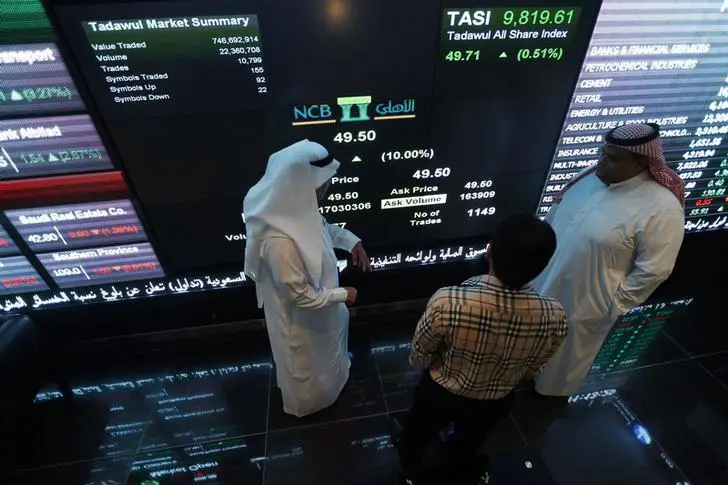(A spelling error in the 10th paragraph was corrected)
On the 25th of September, the DME Oman crude oil contract for November delivery jumped from 80.70 to 86.15. This happened three days before reports were circulating about China's Sinopec halving its oil imports from Iran. While these reports are yet to be confirmed, China already dominates purchases of Omani crude, and the trade that caused the price spike is meant for delivery.
China's influence over crude oil pricing has not gone unnoticed. Chinese traders have been influencing the Dubai forward curve used to price Saudi Aramco's OSPs for quite some time. What we want to explore is not the reasons for the price jump, but the real-life experiment of what happens when Saudi Aramco's OSP for Asian deliveries uses the DME Oman contract as a reference.
The OSP Formula that Changed Everything
The Official Selling Price (OSP) is what a national oil company asks for to sell its crude oil on the spot markets. National oil companies post their OSPs monthly, and refineries around the world accept offers for physical supply. OSPs are more relevant today than ever because of the way Saudi Arabia will be calculating its formula from October 2018 onwards.
Contrary to what most people believe, OPEC's aggregate production is primarily determined by technical factors and monopolistic pricing power. The lack of investment is causing the fall in Venezuelan and Angolan production, and US pressure is behind the Iranian contribution. The buffer stock is controlled by the GCC, and the levers used to control it are the OSP formulas.
Oil is an inelastic commodity, and the reality is that it gives swing producers monopolistic pricing power in the short-term. Monopolies, by definition, can set quantity and let the price float or set the price and let the quantity float to reach equilibrium between supply and demand. The GCC does post prices, but these prices are based on formulas rather than political will.
Until now, posted OSPs had an indirect impact on the major oil benchmarks, and the impact was limited to non-US benchmarks because of the US infrastructure bottlenecks that prevent global arbitrage opportunities. Aramco's decision to include the DME Oman contract in the formula for pricing crude oil deliveries to Asia changed everything.
DME Oman's Entry into the Big League
The DME's Oman contract is dominated by physical players that control production and delivery. With Saudi Aramco's decision to use it in calculating the OSP formula, the pricing power of these players has been significantly amplified.
Unlike Brent and WTI futures, the contract lacks the liquidity across all maturities to be a risk management tool or an instrument for speculators for exposure to oil prices. Open interest is concentrated near expiration, and the contract is the primary mechanism for delivery of medium grade Omani crude, which is not subject to OPEC quotas.
The benchmark controls pricing for refineries in Asia because most of Asia's refining capacity built in the previous decade was to process medium and heavy sour crude. With the change in Saudi Aramco's OSP formula, this control has been amplified.
Aramco's decision will mark a change in the contract's relevance for risk management and speculative flows. The increase in liquidity will come at the expense of the established OTC swap market, in which Brent futures are swapped for a cash-settled physical delivery of Dubai crude oil. While it is an imperfect proxy for Omani crude, and hedgers tolerated the risk of widening differentials between Dubai and Oman crude oil prices.
It would not surprise us to see Brent-Oman contracts improve links for hedgers and eventually make the DME Oman a better tool for risk managers and speculators. While the current formula has a 50 percent weighting to Platts Dubai, the DME Oman contract has the potential to become the only reference benchmark for Saudi Aramco's pricing for deliveries to Asia.
Consider for a moment that the plumbing for arbitrage traders is not as efficient as it should be. There are limited linkages between Brent futures and Omani crude oil. The linkages exist indirectly through the Brent-Dubai exchange of futures for swaps. So one would expect a lag until flows find their way into the Brent futures contract, and that is exactly what happened:
On the 25th of September, the DME Oman crude oil contract for November delivery jumped from 80.70 to 86.15. On the same day, Brent was trading at 81.87. A week later, Brent followed the DME Oman contract to reach 86.29 on the 3rd of October. It is only a matter of time before arbitragers discover this market anomaly.
Any opinions expressed here are the author’s own.
Disclaimer: This article is provided for informational purposes only. The content does not provide tax, legal or investment advice or opinion regarding the suitability, value or profitability of any particular security, portfolio or investment strategy. Read our full disclaimer policy here.
© Opinion 2018























